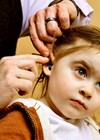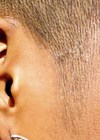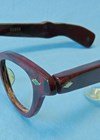Audiology features
Audible Contrast Threshold – a new test to guide setting help-in-noise features in hearing aids
A new diagnostic test that is quick and has directly applicable results to hearing aid settings has arrived, but how does it work? Leigh Martin has the answers. In an earlier article for ENT & Audiology News, Parmar and Rajasingam...
Early detection pathways for congenital cytomegalovirus for infants referred from the newborn hearing screen
This article discusses requirements for an early congenital cytomegalovirus (cCMV) detection pathway to ensure children do not miss out on the opportunity for timely diagnosis and treatment. The pathways described are currently in use in England and apply to well...
Tinnitus treatment device from concept to commercialisation
Innovation in the field of healthcare is fraught with nearly insurmountable challenges. Bringing a novel product to the market requires a new (patentable) idea that can be reduced to practice, manufactured at scale, and can pass all regulatory barriers. In...
Effective and profitable provision of paediatric audiology care in the private sector
Similar to other specialty areas of hearing healthcare, paediatric audiology is a potential net loss for a private-sector, for-profit, business. Given the time-intensive needs of patients with cochlear implants, tinnitus and those who are under the age of 18 years...
The use of social media to drive practice growth
Cliff Olson is the most successful user of social media in the hearing care industry as of the date of this publication. His videos have been viewed worldwide, and he has more YouTube followers than all the major hearing aid...
The business of audiology: unbundling
Many professions, such as law, accounting, engineering and some areas of healthcare charge hourly rates in a fee-for-service model. Administratively, this can be a challenge to track hours, bill clients/patients, and collect payment, but this does lend toward greater transparency...
Clinical and financial success by providing specialised audiological tinnitus management
Diagnosis and management of a patient with chronic subjective tinnitus is one of the most labour-intensive areas of hearing healthcare. This is one reason some hearing care providers opt to exclude specialised tinnitus care from their practice: it may not...
CROS hearing aids existed 10 years before they were even invented!
We all know the principles of CROS aids and the potential benefits they provide to patients, but did you know they were invented many years before they were officially described in literature? In this engaging article, Neil Bauman explains how...
A brief history of the acoustic ear trumpet and some collection favourites
If you think you know a thing or two about ear trumpets, I’d bet Michael Briggs knows more! In this fascinating article, he tells the history of the ear trumpet, as well as sharing some wonderful pictures from his Guiness...
Technological advances in hearing aids and their significance for people with hearing loss during a period of more than 100 years
Over a century of progress in hearing aid technology has transformed the lives of those with hearing impairments. From the bulky, conspicuous devices of the past, to today’s sleek, AI-powered solutions, this article explores the three key eras of development....
The history of person-centred hearing care
In the World Report on Hearing, launched by the World Health Organization (WHO) on 3 March 2021, the use of person-centred care is highly recommended. In this article, we learn about the history of person-centred healthcare and hearing care. But...
The history of bone-conduction devices
The evolution of bone-conduction hearing devices from the 1400s’ rudimentary designs to today’s advanced models has greatly improved hearing for individuals with conductive or mixed hearing loss. This article delves into the history and technical advancements over the years, as...

















